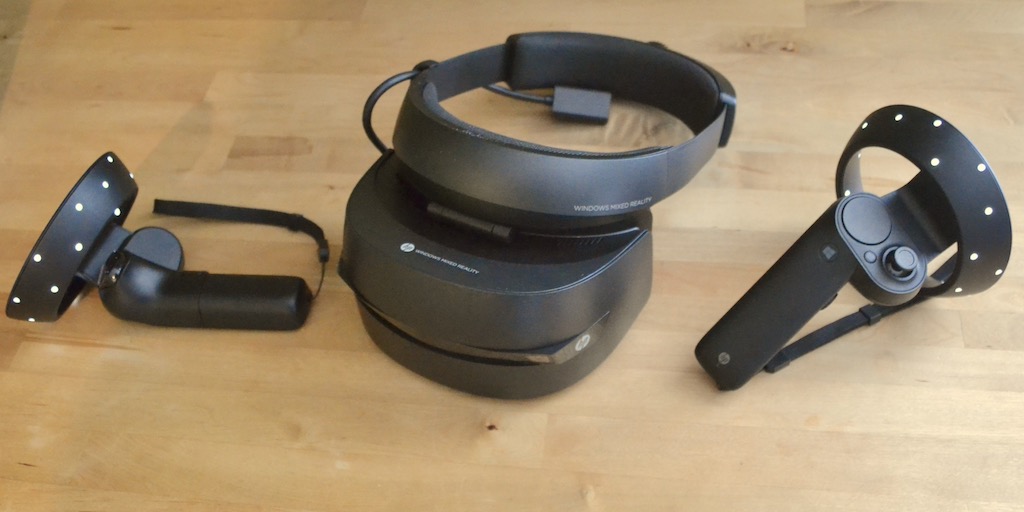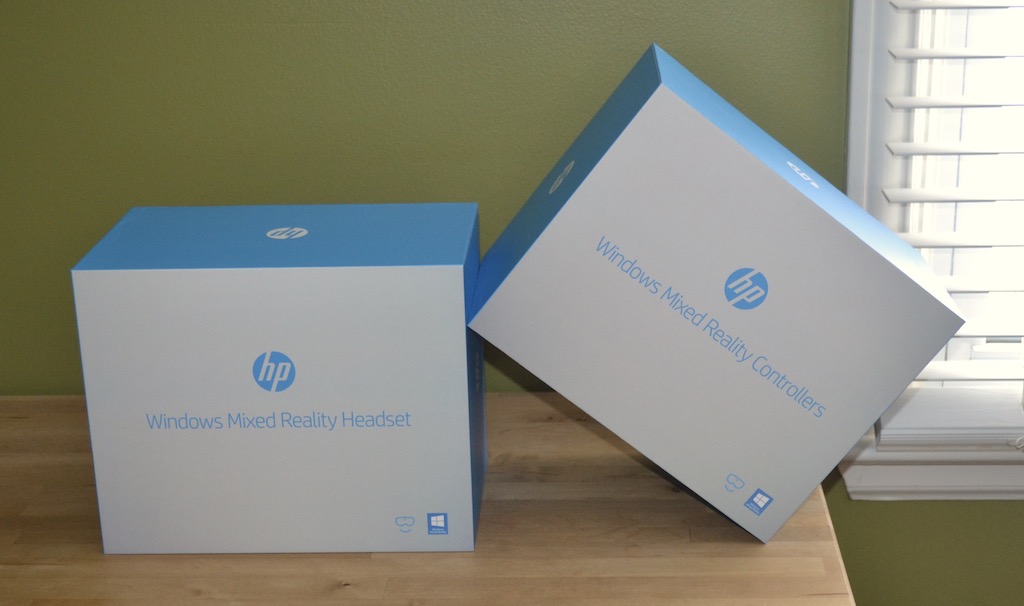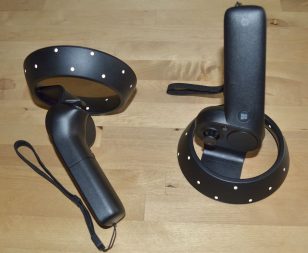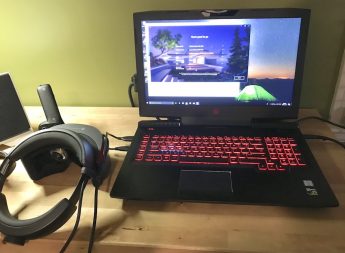
Virtual reality continues its push into the mainstream. Kicked off by the success of the Oculus Rift, there is now a growing range of virtual reality options. You can get your fix on a game console with Sony’s Playstation VR. You can go with the classic VR platform led by Oculus and HTC’s Vive (which I reviewed a few weeks back). And more recently there’s another option for the PC: Microsoft’s Windows Mixed Reality, or WMR. That’s the subject of this review, the HP WMR headset and controllers. There has never been a wider selection of VR headsets to choose from.
And with good reason. The hardware keeps getting better and developers are learning how to maximize experiences for a virtual environment.
To get an idea of how awesome the content is getting for VR on a PC, check out Steven Hill’s post on the top-selling VR games for the PC. There are some real gems in there. WMR is a relatively new platform, so it doesn’t have the same depth of software selection, but give it time. My go-to game while testing WMR systems is Ghostbusters VR, and it shows that Windows Mixed Reality has just as much gaming potential as the other virtual reality platforms.
But enough about the virtues of VR, and on to my review of the HP Windows Mixed Reality headset and controllers.
Unboxing and Setup

Unboxing HP’s WMR headset and controllers immediately reveals what I consider to be a key advantage of Windows Mixed Reality compared to traditional VR. There are two boxes, but there’s not a whole lot of stuff in them.
One box has the headset, and its single 2-in-1 cable. The second holds the pair of controllers and AA batteries for them. That’s about it. One cable, no external base stations to set up, no hub, no power adapters.
The biggest part of the setup was the work required before plugging in the headset. I had a very nice HP Omen 17-inch gaming laptop on hand for testing. You need to make sure your host PC meets WMR’s requirements and this one did, with an Intel Core i7 CPU and Nvidia GeForce GTX 1060 video card. WMR does support less powerful configurations, but to get what’s described as the “Windows Mixed Reality Ultra” experience that gets you VR gaming and high frame rates (a key to avoiding motion sickness), you’ll want to stay away from the minimum specs.
Windows 10 Fall Creators Update is a requirement and that can take a few hours to download and run. Once done, setup is pretty straightforward. Plug the HP headset in (the single cable has both HDMI and USB connections for the PC), the WMR setup confirms compatibility, directs you to pair the Bluetooth controllers, asks you to choose whether you will be stationary or moving, and that’s about it.
HP WMR Headset Specs (as Tested):
For full specifications, see the HP WMR headset product page. |
The Headset

Comfortable, well-padded, not overly heavy and well-balanced. Adjustment is via a dial mounted to the well-padded headband; just dial in your fit. A single cable connects to a dongle hanging off one side, but the cable is relatively thin and light, and you have 4 metres of length to play with. The visor flips up so you can quickly return to the real world without having to physically remove the headset.
The Controllers

I still love the look of WMR controllers. They’re studded with LEDs that are the key to motion tracking in the system. HP’s follow the standard design, so they’re comfortable to hold, light weight, and there is a full range of integrated controls including a trigger, joystick, pad and various buttons—including a Windows button, of course. There are integrated straps so you don’t accidentally throw them across the room.
They use AA batteries (included), which is good in the sense that if a controller runs out of power in the middle of a session you can simply swap them out instead of having to wait a few hours for a USB charge. Batteries can also be a pain and require frequent replacement. I’d suggest a compromise by picking up some rechargeables and always having a second set charged and ready to go …
 User Experience
User Experience
Regular readers of Plug-in probably noticed that the HP WMR headset and controllers look remarkably similar to the Acer versions I reviewed in December. The HP headset is a little more conservative in black, but otherwise they seem practically identical. That’s because Windows Mixed Reality is a platform with design specifications set by Microsoft. The hardware from different manufacturers looks similar, but this strict adherence ensures they deliver an identical experience.
Which is pretty good. Once again, my kids were all over this and Ghostbusters VR was the game of choice. The HP headset is comfortable to wear, the single cable quickly fades into the background and the controllers are intuitive and responsive. With dual 1440 x 1440 resolution, graphics are also impressive. The only knock against HP’s offering and WMR in general is that the headset loses track of the controllers if you move them behind your back, out of the line-of-sight of the cameras in the headset.
Is HP’s WMR Headset the VR Option for You?
Choice is a good thing. In the early days of virtual reality, your choices were pretty much limited to the Oculus Rift and HTC Vive. Great options, but not a whole lot of choice. With Windows Mixed Reality, the market for VR hardware is rapidly expanding, giving you many more choices—without having to worry about compatibility issues. All WMR gear is designed to the same specifications set out by Microsoft.
HP’s WMR headset and controllers offer an entry into virtual reality that includes the WMR advantage of a single-cable tether. And if you’re already a fan of HP products, then this is probably the option you’d choose, by default. Whatever your reason, you’re getting a well-built headset that’s comfortable to wear, along with a nice set of controllers.
Still pondering the whole VR thing? Best Buy is all-in on this futuristic technology and carries all the latest virtual reality headsets, as well as the VR-capable computers needed to drive your virtual experience.


